Honors and Awards
Greg Jones Voted Top 100 vSpring Capital Venture Entrepreneur for 2009
 Congratulations go out to our Associate Director Greg Jones who was recently designated a v|100 - vSpring Top 100 Venture Entrepreneur. The v|100 designation is given to those individuals voted most likely to lead a successful business venture in Utah within the next few years. The v|100 is designed to help entrepreneurs and vSpring Capital establish and cultivate relationships among top CEO and CTO talent in the region. Members of this elite executive community are chosen through a peer-nominated and peer-selected process. Top members of the Utah business community were surveyed by a vSpring team to nominate the top 100 ventrue entrepreneurs in Utah. 2009 marks the sixth year of the v|100 Community. Greg was also selected as a v|100 member in 2008 and 2005.
Congratulations go out to our Associate Director Greg Jones who was recently designated a v|100 - vSpring Top 100 Venture Entrepreneur. The v|100 designation is given to those individuals voted most likely to lead a successful business venture in Utah within the next few years. The v|100 is designed to help entrepreneurs and vSpring Capital establish and cultivate relationships among top CEO and CTO talent in the region. Members of this elite executive community are chosen through a peer-nominated and peer-selected process. Top members of the Utah business community were surveyed by a vSpring team to nominate the top 100 ventrue entrepreneurs in Utah. 2009 marks the sixth year of the v|100 Community. Greg was also selected as a v|100 member in 2008 and 2005.
Greg Jones Voted Top 100 vSpring Capital Venture Entrepreneur for 2008
 Congratulations go out to our new Associate Director Greg Jones who was recently designated a v|100 - vSpring Top 100 Venture Entrepreneur. The v|100 designation is given to those individuals voted most likely to lead a successful business venture in Utah within the next few years. The v|100 is designed to help entrepreneurs and vSpring Capital establish and cultivate relationships among top CEO and CTO talent in the region. Members of this elite executive community are chosen through a peer-nominated and peer-selected process. Top members of the Utah business community were surveyed by a vSpring team to nominate the top 100 ventrue entrepreneurs in Utah. 2008 marks the fifth year of the v|100 Community. Greg was also selected as a v|100 member in 2005.
Congratulations go out to our new Associate Director Greg Jones who was recently designated a v|100 - vSpring Top 100 Venture Entrepreneur. The v|100 designation is given to those individuals voted most likely to lead a successful business venture in Utah within the next few years. The v|100 is designed to help entrepreneurs and vSpring Capital establish and cultivate relationships among top CEO and CTO talent in the region. Members of this elite executive community are chosen through a peer-nominated and peer-selected process. Top members of the Utah business community were surveyed by a vSpring team to nominate the top 100 ventrue entrepreneurs in Utah. 2008 marks the fifth year of the v|100 Community. Greg was also selected as a v|100 member in 2005.
Steve Parker Selected Member of DARPA Computer Science Study Group
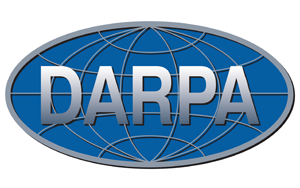 has been selected by the Pentagon's Defense Advanced Research Projects Agency (DARPA) to be a member of the 2008 DARPA . The program supports university researchers with research grants for up to three years, while informing them of the Department of Defense's information technology needs and priorities. Dr. Parker will receive $100,000 the first year, and potentially as much as $750,000 during the second and third years.
has been selected by the Pentagon's Defense Advanced Research Projects Agency (DARPA) to be a member of the 2008 DARPA . The program supports university researchers with research grants for up to three years, while informing them of the Department of Defense's information technology needs and priorities. Dr. Parker will receive $100,000 the first year, and potentially as much as $750,000 during the second and third years.
Claudio Silva Receives IBM Faculty Award for Third Year Running
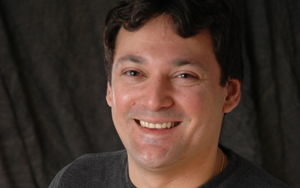 has been honored once again with a coveted IBM Faculty Award. This award is designed to promote innovative, collaborative research and honor outstanding faculty working in disciplines of interest to IBM. It includes $30,000 to support ongoing research. Dr. Silva is being recognized for his continuing success in developing efficient rendering techniques for large-scale scientific visualization. The increase in computational power has enabled the generation of large and complex simulations. Scientists and engineers are now faced with an incredible amount of data to analyze. Despite considerable effort, techniques for the visualization of large datasets, common in scientific simulations, still take too long. In addition, most current techniques suffer from strict data size limitations due to the reliance on having the complete datasets in main memory. In order to address the interactivity and scalability requirements, the Dr. Silva and his team are developing novel out-of-core, streaming, and parallel algorithms for optimizing the visualization of large datasets. The development of scalable rendering algorithms is of key importance to the advancement of visualization, graphics, and computational science.
has been honored once again with a coveted IBM Faculty Award. This award is designed to promote innovative, collaborative research and honor outstanding faculty working in disciplines of interest to IBM. It includes $30,000 to support ongoing research. Dr. Silva is being recognized for his continuing success in developing efficient rendering techniques for large-scale scientific visualization. The increase in computational power has enabled the generation of large and complex simulations. Scientists and engineers are now faced with an incredible amount of data to analyze. Despite considerable effort, techniques for the visualization of large datasets, common in scientific simulations, still take too long. In addition, most current techniques suffer from strict data size limitations due to the reliance on having the complete datasets in main memory. In order to address the interactivity and scalability requirements, the Dr. Silva and his team are developing novel out-of-core, streaming, and parallel algorithms for optimizing the visualization of large datasets. The development of scalable rendering algorithms is of key importance to the advancement of visualization, graphics, and computational science.
SCI Graduate Student Andrew Kensler Wins Mozy Coding Deathmatch
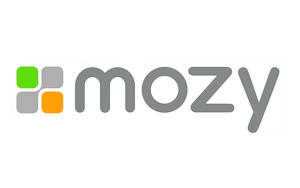 Andrew Kensler took the $10,000 grand prize in Mozy.com's Coding Deathmatch. The contest consisted of three timed rounds of competition, two preliminary rounds were held online and the final round at Mozy.com's American Fork (Utah) headquarters. Only the top eight contestants were allowed to proceed to the final round. Contestants were asked to write programs in any of nine possible languages to to solve a series of problems. The winning code was graded on it's ability to solve the problem in the least amount of execution time. The problem for the final round was to write a program that would read through a 2GB file of 20 million records of 100 bytes each. The first 8 bytes represented the key for that record and the remainder was a payload. The program had to write out a file containing just the records that would be in the 0, 1M, 2M, 3M... positions as sorted by the key values. Ties between keys were to be broken by original order in the file. Wall-clock execution time of the correct programs was used to decide the final ranking for the contest. Timings were done on a virtual machine with 1GB of RAM and 4GB of scratch disk space available.
Andrew Kensler took the $10,000 grand prize in Mozy.com's Coding Deathmatch. The contest consisted of three timed rounds of competition, two preliminary rounds were held online and the final round at Mozy.com's American Fork (Utah) headquarters. Only the top eight contestants were allowed to proceed to the final round. Contestants were asked to write programs in any of nine possible languages to to solve a series of problems. The winning code was graded on it's ability to solve the problem in the least amount of execution time. The problem for the final round was to write a program that would read through a 2GB file of 20 million records of 100 bytes each. The first 8 bytes represented the key for that record and the remainder was a payload. The program had to write out a file containing just the records that would be in the 0, 1M, 2M, 3M... positions as sorted by the key values. Ties between keys were to be broken by original order in the file. Wall-clock execution time of the correct programs was used to decide the final ranking for the contest. Timings were done on a virtual machine with 1GB of RAM and 4GB of scratch disk space available.
Won-Ki Jeong Awarded NVIDIA Fellowship
 SCI graduate student Won-Ki Jeong was selected as one of 10 applicants to be awarded the coveted NVIDIA Fellowship Award for 2007-2008. The NVIDIA Fellowship Program provides funding to Ph.D. students who are conducting research on topics which are expected to lead to major advances in the graphics and digital media industry, and are investigating innovative ways of leveraging the power of graphics hardware. Won-Ki Jeong's graduate adviser is SCI faculty member Dr. Ross T. Whitaker.
SCI graduate student Won-Ki Jeong was selected as one of 10 applicants to be awarded the coveted NVIDIA Fellowship Award for 2007-2008. The NVIDIA Fellowship Program provides funding to Ph.D. students who are conducting research on topics which are expected to lead to major advances in the graphics and digital media industry, and are investigating innovative ways of leveraging the power of graphics hardware. Won-Ki Jeong's graduate adviser is SCI faculty member Dr. Ross T. Whitaker. For more information about the award, please see the NVIDIA press release "NVIDIA Awards Fellowships to Top Ph.D. Innovators."
Three SCI Developers Among Winners of Mozy.com's Code Deathmatch
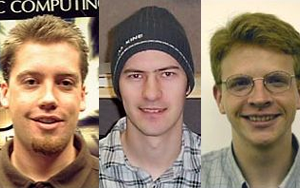 Competing individually in the Mozy Code Deathmatch, SCI developers McKay Davis, Michael Callahan and Bryan Worthen represented three of the eight finalists and shared in the grand prize of $10,000. This unique coding contest was conducted with two online preliminary rounds and a final round held at Mozy.com's American Fork (Utah) office. The first round, lasting just an hour, required contestants to solve six small programming puzzles. The second round challenged the remaining contestants with four more difficult problems. The eight finalists then were invited to Mozy.com's office to compete head-to-head. In the final round, the contestants were asked to write - in under ninety minutes - a small web server capable of handling 10,000 simultaneous connections. To assess the contestants' efforts, the judges then used a test client to connect and to establish a data connection with each server 10,000 times in a short period. Each server then had to sort the data and retrieve three specific pieces of the data. Although all finalists managed to develop a functioning server, none of their servers scaled well enough to meet the full scope of the challenge. After some debate, all agreed to declare the competition a tie and to split the prize money equally among the finalists.
Competing individually in the Mozy Code Deathmatch, SCI developers McKay Davis, Michael Callahan and Bryan Worthen represented three of the eight finalists and shared in the grand prize of $10,000. This unique coding contest was conducted with two online preliminary rounds and a final round held at Mozy.com's American Fork (Utah) office. The first round, lasting just an hour, required contestants to solve six small programming puzzles. The second round challenged the remaining contestants with four more difficult problems. The eight finalists then were invited to Mozy.com's office to compete head-to-head. In the final round, the contestants were asked to write - in under ninety minutes - a small web server capable of handling 10,000 simultaneous connections. To assess the contestants' efforts, the judges then used a test client to connect and to establish a data connection with each server 10,000 times in a short period. Each server then had to sort the data and retrieve three specific pieces of the data. Although all finalists managed to develop a functioning server, none of their servers scaled well enough to meet the full scope of the challenge. After some debate, all agreed to declare the competition a tie and to split the prize money equally among the finalists.
Claudio Silva Receives Second IBM Faculty Award
 has been honored once again with a coveted IBM Faculty Award. This award is designed to promote innovative, collaborative research and honor outstanding faculty working in disciplines of interest to IBM. Dr. Silva is being recognized for his work developing efficient rendering techniques for large-scale scientific visualization. Much of modern science and engineering occurs on a computer, analyzing data collected from a variety of sources. Often the size of the datasets under analysis overwhelms the processing ability of whatever computer resources are available. Usually, in order to visualize a dataset it is necessary to have the entire dataset in main memory at once. Dr. Silva's project is developing faster, more efficient algorithms for processing large data and methods for dynamically loading only those parts of the data immediately needed for visualization. These methods show great promise for significantly improving our ability to visualize large datasets.
has been honored once again with a coveted IBM Faculty Award. This award is designed to promote innovative, collaborative research and honor outstanding faculty working in disciplines of interest to IBM. Dr. Silva is being recognized for his work developing efficient rendering techniques for large-scale scientific visualization. Much of modern science and engineering occurs on a computer, analyzing data collected from a variety of sources. Often the size of the datasets under analysis overwhelms the processing ability of whatever computer resources are available. Usually, in order to visualize a dataset it is necessary to have the entire dataset in main memory at once. Dr. Silva's project is developing faster, more efficient algorithms for processing large data and methods for dynamically loading only those parts of the data immediately needed for visualization. These methods show great promise for significantly improving our ability to visualize large datasets.This award includes $30,000 to support ongoing research. This is the second year in a row IBM has chosen to honor Dr. Silva with this award.
Steve Parker Listed Among HPCwire's 2006 "People to Watch"
 Parker, Steve
Parker, SteveResearch Assistant Professor
University of Utah
"The impact of high-performance computing on society has been astounding, but I believe that we are just starting to see the tip of the iceberg. HPC is going to play an integral role in tackling many of the world's toughest scientific challenges as we continue through the 21st century, and will shape our national policy, our laws, and even our health."
- Steve Parker
Why he's worth watching: As Research Assistant Professor at the University of Utah, Steve Parker specializes in HPC environments, focusing on tackling the toughest multi-scale, multi-physics computational challenges. "I believe that the HPC community needs more effective ways to bring large-scale machines to bear on a vast array of challenges," explains Parker. "Software that is easy to understand, reusable, robust, and reliable is vital to achieving the promise of HPC. We need software that can compute, manage, analyze, and visualize data in a much more straightforward manner, and it must scale to solve problems both large and small."
Greg Jones Appointed State Science Advisor
 By PR and Business Wire News, 9/12/2005 03:36:02 PM MT
By PR and Business Wire News, 9/12/2005 03:36:02 PM MTUtah Governor Jon M. Huntsman, Jr., has appointed Gregory M. Jones, PhD as the new State Science Advisor. The position is part of the Governor's Office of Economic Development (GOED) and oversees the state's economic clusters to create jobs.
Before joining state government, Dr. Jones was the associate director of the Scientific Computing and Imaging (SCI) Institute in Salt Lake City and an adjunct assistant professor of Radiology at the University of Utah. He was also president and chief operations officer of Visual Influence Inc., a spin-off company of SCI.
Chuck Hansen Receives IEEE 2005 Visualization Technical Achievement Award
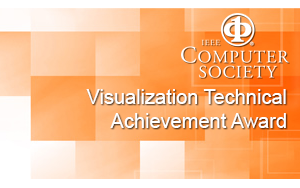 has been awarded the 2005 Visualization Technical Achievement Award by the Visualization and Graphics Technical Committee of the IEEE Computer Society (IEEE VGTC). The award is in recognition of "seminal work on tools for understanding large-scale scientific data sets".
has been awarded the 2005 Visualization Technical Achievement Award by the Visualization and Graphics Technical Committee of the IEEE Computer Society (IEEE VGTC). The award is in recognition of "seminal work on tools for understanding large-scale scientific data sets".This is an international award and is the highest honor and recognition in visualization research. The IEEE VGTC started this award just last year, so Chuck is the second recipient of the IEEE Visualization Technical Achievement Award.




